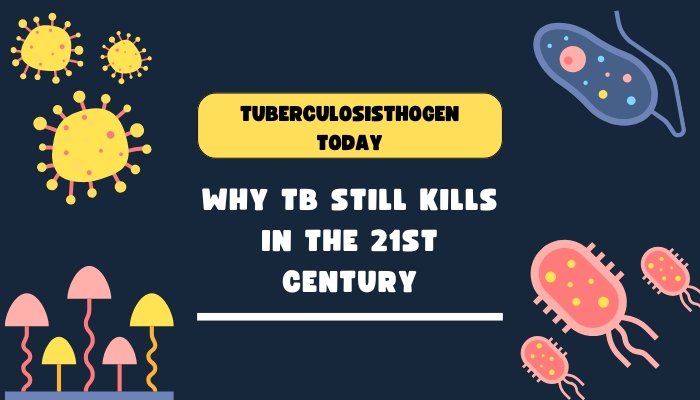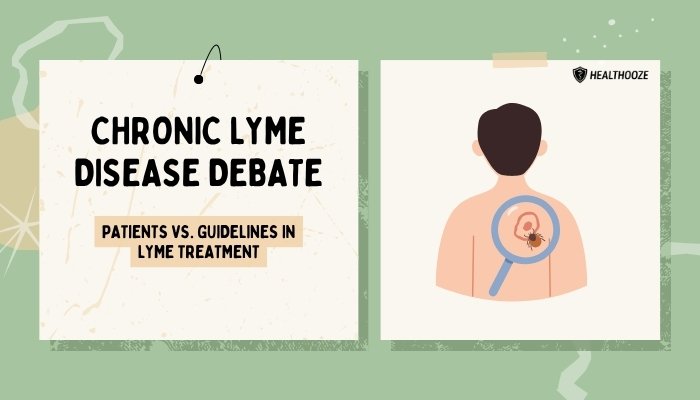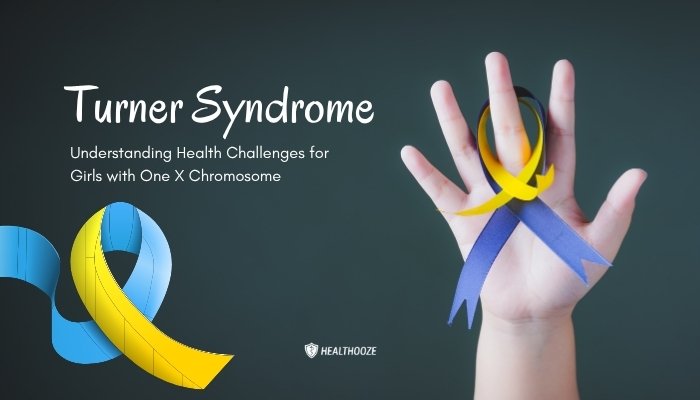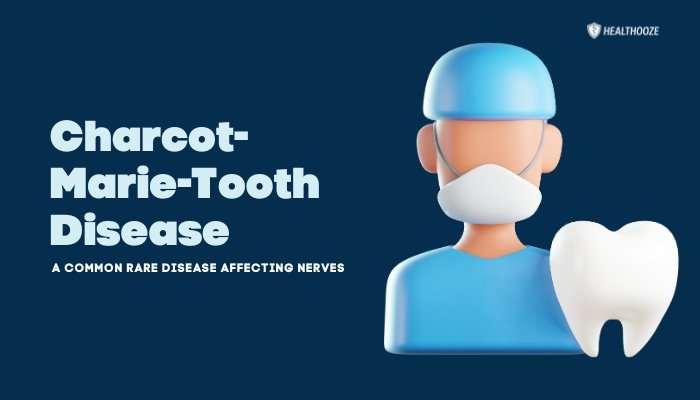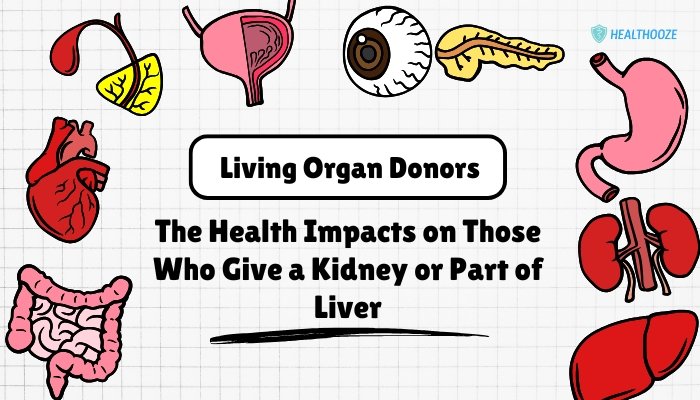Introduction
Tuberculosis (TB) is a persistent global health challenge that causes illness and death in many regions. Caused by the bacterium Mycobacterium tuberculosis, TB primarily affects the lungs (pulmonary TB), though it can target other organs (extrapulmonary TB). Despite the availability of effective treatment options, TB remains a major cause of mortality worldwide. Several factors—including drug resistance, poor healthcare access, and social inequities—hinder control efforts.
This article examines why TB continues to pose a threat in the 21st century. It outlines the disease’s nature, global distribution, risk factors, diagnostic limitations, and the link between TB and other health problems. It explores modern treatment approaches, drug resistance patterns, and strategies to prevent new infections. It also discusses emerging research focused on strengthening global responses.
Understanding Tuberculosis
The Causative Agent: Mycobacterium tuberculosis
Mycobacterium tuberculosis is a slow-growing bacterium with a protective cell wall that enables it to survive in human tissue. It spreads when an infected person with active pulmonary TB coughs, sneezes, or expels respiratory droplets containing the organism. People who inhale these droplets can acquire the infection.
In many individuals, the immune system contains the bacteria in a latent state. Latent TB means the individual does not exhibit symptoms or spread the pathogen, but the possibility of reactivation exists if immunity weakens later.
TB as a Global Disease
TB affects countries worldwide, but most cases occur in parts of Africa, Asia, and Eastern Europe. Overcrowded living environments, inadequate healthcare infrastructure, and lack of public health resources contribute to higher rates of TB in low-income settings. However, TB also appears in higher-income countries through immigration, travel, and localized outbreaks among underserved populations.
TB’s continued presence stems from multiple factors such as slow diagnostic processes, long treatment durations, stigma, and gaps in global healthcare policies. In recent decades, the rise of multidrug-resistant TB (MDR-TB) and extensively drug-resistant TB (XDR-TB) has complicated control initiatives and reduced the success of standard therapies.
Key Factors Contributing to TB Mortality
Late Diagnosis and Diagnostic Challenges
Diagnosis often involves sputum tests (smear microscopy or culture) and imaging, such as chest X-rays. However, smear microscopy can miss early or mild infections, and cultures take weeks to yield results. Rapid molecular tests like the GeneXpert MTB/RIF have improved early detection by identifying the bacteria and rifampin resistance in a few hours. Still, these newer tests may be less accessible in under-resourced regions.
When diagnosis is delayed, individuals may go untreated for extended periods and unknowingly transmit the disease. Late detection also increases the chance that patients begin treatment after the infection has advanced, placing them at higher risk of complications or death.
Drug Resistance
Drug-resistant TB arises from incomplete treatment courses, substandard medications, or poor infection control practices. MDR-TB strains resist isoniazid and rifampin—the two most powerful first-line drugs. XDR-TB strains resist these medications plus fluoroquinolones and second-line injectable agents. This pattern of resistance makes treatment more complex, extended, and expensive.
Patients with drug-resistant TB often face prolonged hospital stays and more adverse effects from second- or third-line regimens. The likelihood of treatment failure and death is higher in these cases. Drug-resistant TB also presents a burden to healthcare systems and public health programs, which struggle to handle contact tracing and specialized care protocols.
Social and Economic Inequities
Social conditions—such as poverty, inadequate housing, overcrowded living spaces, and poor nutrition—create environments where TB transmission is more likely. For instance, crowded shelters or prisons can facilitate the spread of airborne diseases. Individuals living in marginalized communities might delay seeking care because of cost or limited transportation.
Economic pressures often cause individuals to discontinue treatment early if they cannot afford to travel to clinics regularly. People who face systemic discrimination may also avoid healthcare facilities where they have previously experienced negative treatment. These social and economic factors perpetuate TB and increase mortality rates.
Co-infections
Human Immunodeficiency Virus (HIV) is a common co-infection that significantly increases the risk of TB progression from latent to active disease. Weakened immune systems have difficulty containing Mycobacterium tuberculosis, making TB more severe. TB is a major cause of death in individuals with HIV/AIDS. Chronic diseases such as diabetes also weaken a person’s immune defenses and amplify TB risks.
In countries with elevated HIV prevalence, co-management of TB and HIV is crucial for reducing mortality. Coordinated screening, diagnosis, and treatment can help lower TB mortality in these populations.
Latent TB vs. Active TB
Latent Tuberculosis Infection (LTBI)
In latent TB, the immune system walls off the bacteria, preventing symptom development. These individuals test positive on skin or blood tests for TB exposure, but they do not exhibit clinical or radiological signs of active infection. They are not contagious.
However, latent TB can progress to active TB if the immune system becomes compromised by chronic disease, malnutrition, or immunosuppressive drugs. Proactive screening and prophylactic therapies (using a short course of TB medication) can prevent reactivation, especially in high-risk groups such as people with HIV or those preparing for immunosuppressive therapies.
Active Tuberculosis
Active TB usually presents with persistent cough, night sweats, weight loss, and fever. The cough often brings up sputum that can contain blood or bacteria-laden particles. When TB affects organs outside the lungs, symptoms vary but may include lymph node swelling, abdominal pain, or neurological issues if the infection targets the brain.
Prompt diagnosis and treatment of active TB help prevent complications and halt community spread. Recognizing the early signs is vital, as early intervention often leads to better outcomes.
Clinical Presentation and Complications
Pulmonary TB Symptoms
- Chronic cough lasting more than two weeks
- Sputum that may be bloody
- Chest discomfort or pain
- Fever and chills
- Marked fatigue
Extrapulmonary TB Symptoms
- Lymph node swelling (lymphatic TB)
- Chronic abdominal pain (abdominal TB)
- Back pain or vertebral damage (spinal TB)
- Neurological deficits (TB meningitis)
Major Complications
- Respiratory failure due to extensive lung damage
- Meningitis when TB spreads to the membranes around the brain
- Permanent disability, such as spinal deformities
- Multisystem organ involvement leading to septic shock
Untreated or inadequately treated TB can result in long-term impairment or death, illustrating the need for comprehensive and timely treatment.
Standard TB Treatment: Challenges and Realities
First-Line Therapy
Standard first-line therapy for drug-susceptible TB includes a combination of antibiotics over six months:
- Intensive phase: Usually two months of isoniazid, rifampin, pyrazinamide, and ethambutol
- Continuation phase: Usually four months of isoniazid and rifampin
Adherence is critical to prevent relapse and the development of drug resistance. Some individuals struggle to complete the full course due to side effects, logistical issues, or lack of support. Interventions like directly observed therapy (DOT) improve adherence by ensuring that each medication dose is taken under supervision.
Treatment for Drug-Resistant TB
Managing drug-resistant TB involves second-line medications that can produce more severe side effects and require a longer treatment period—up to 20 months or more. Patients may need injectable agents, fluoroquinolones, or new medications such as bedaquiline and delamanid.
Drug-resistant TB strains demand specialized laboratory facilities to confirm resistance profiles, which may be unavailable in remote regions. Even when the necessary infrastructure is present, patients face long hospital stays or frequent clinic visits, creating a burden that affects adherence.
Adverse Effects and Patient Support
TB medications can cause liver toxicity, gastrointestinal upset, and other complications. Some second-line drugs cause hearing loss, kidney problems, or neurologic issues. Ongoing lab monitoring (liver function tests, kidney function tests) is essential for detecting toxicity.
Patient support services—such as social assistance, nutritional support, or mental health counseling—are vital. Individuals grappling with these side effects often need guidance and encouragement to sustain therapy.
TB Control Measures: Past and Present
Bacille Calmette-Guérin (BCG) Vaccination
BCG is a widely used vaccine that helps protect children from severe TB forms (e.g., TB meningitis). However, its effectiveness in preventing pulmonary TB in adults is limited. BCG remains a cornerstone of childhood immunization in high-burden countries, but researchers continue to pursue more effective vaccines for broader protection.
Directly Observed Therapy (DOT) Strategy
DOT is a practice in which healthcare workers or trained volunteers watch patients take TB medications to ensure adherence. The aim is to prevent missed doses, reduce drug resistance, and improve treatment success. DOT programs have demonstrated positive results, but they require significant resources and infrastructure.
Contact Tracing and Community Screening
When healthcare teams identify active TB in one individual, they investigate people who have had recent contact with that person. This method can uncover undiagnosed infections—either active or latent. Community screening in high-burden areas also identifies individuals who might not seek care on their own.
Public Health Education
Awareness programs teach communities about TB’s transmission, symptoms, and treatment. Initiatives include:
- Posters, radio announcements, and television segments
- Workshops for local health workers
- Educational visits to high-risk communities
Encouraging people to recognize and act on early symptoms remains a core public health goal.
Ongoing Barriers to TB Elimination
Drug Supply and Quality
In some low- and middle-income countries, an inconsistent supply of quality-assured TB medications can disrupt treatment and promote drug resistance. These supply chain issues can stem from limited funding, inadequate storage facilities, or logistical challenges in remote areas.
Stigma and Discrimination
Many people associate TB with poverty or social exclusion. They may hide symptoms or avoid clinics, fearing negative reactions from employers or neighbors. Stigma also impacts mental health, which can reduce the likelihood of completing treatment. Reducing stigma through education campaigns, peer support, and open discussions about TB can encourage more individuals to seek timely care.
Lack of Research Funding
TB research has historically received less funding than other global health priorities. Inadequate support slows the development of faster diagnostic tools, shorter drug regimens, and more effective vaccines. Although new solutions are under development, gaps in funding and policy remain.
Migration and Urbanization
Rapid urbanization and international migration increase the movement of people between rural and urban areas or across borders. High population density, inadequate housing, and limited healthcare resources in growing cities can facilitate TB transmission. Public health officials must adapt strategies to address these shifts in population.
The Role of Co-morbidities
HIV/TB Co-infection
HIV compromises the immune system, making it harder to contain TB. Comprehensive care involves:
- Regular TB screening for HIV patients
- Early initiation of antiretroviral therapy (ART)
- Prophylactic TB medications for individuals with latent TB and HIV
Joint TB/HIV clinics reduce the burden on patients who might otherwise travel to multiple locations for separate treatments. Streamlined care can significantly lower mortality rates.
Diabetes and TB
Diabetes weakens the body’s capacity to combat infections, raising the risk of active TB. High blood sugar contributes to immune dysfunction. Individuals with diabetes who develop TB may face complications unless both conditions are effectively managed. Close blood glucose monitoring and attention to TB medication interactions are important.
Chronic Kidney and Liver Diseases
Pre-existing kidney or liver issues can complicate TB treatment because many TB drugs affect these organs. Clinicians must balance effective TB therapy with preserving organ function through adjusted dosages or careful monitoring. This balancing act can make treatment more costly and complicated, increasing the risk of poor outcomes.
New Developments and Research
Novel Vaccines
Researchers are testing vaccine candidates that might offer better protection than the BCG vaccine or serve as booster shots for adolescents and adults. These products aim to induce stronger and longer-lasting immunity. Clinical trials in various countries are underway to assess safety and effectiveness.
Shorter Drug Regimens
Clinical trials are exploring regimens that could reduce treatment duration to four months or less for drug-susceptible TB. Early results suggest that certain combinations of new and existing drugs may achieve high cure rates. Shorter courses can improve adherence, reduce costs, and help patients return to normal life.
Digital Tools for Adherence
Mobile phone applications, video-based DOT, and digital pillboxes are emerging methods to ensure that patients continue therapy. These technologies allow healthcare workers to verify that doses are taken, give reminders, and address challenges as they arise. Digital records can streamline data collection and help public health officials analyze program performance.
Host-Directed Therapies
Host-directed therapies focus on boosting the patient’s immune response to Mycobacterium tuberculosis rather than targeting the bacteria directly. Examples include using anti-inflammatory or immunomodulatory drugs. Early research indicates that these therapies, in combination with standard TB medications, might accelerate recovery and lessen lung damage.
Strategies for Reducing TB Mortality
Strengthening Health Systems
Improving primary healthcare infrastructure is crucial to preventing late diagnosis. Investments in lab facilities, trained personnel, and modern diagnostic machines can raise detection rates. Ensuring that rural and remote communities have access to testing centers can help catch cases early.
Integrated TB and HIV Programs
Coordinated TB and HIV testing ensures that people diagnosed with one condition are also screened for the other. This helps to start treatment promptly and minimize complications. Collaborative clinical protocols reduce patient visits and remove barriers to comprehensive care.
Addressing Social Determinants
Community-based strategies that target undernutrition, housing quality, and general healthcare coverage can reduce TB vulnerability. Food assistance, improved living conditions, and social support services lower the risk of infection and disease progression. In some settings, cash transfer programs and expanded job opportunities have contributed to lower TB rates by enhancing overall living conditions.
Advocacy and Policy
National governments and global agencies that prioritize TB elimination can pass legislation to secure funding for research, expand access to treatments, and foster international cooperation. Advocacy groups also play a role by raising awareness and mobilizing support among citizens. Countries that commit resources to robust TB control often see measurable declines in new cases.
Practical Guidance for Individuals and Communities
Early Detection
Community members can help detect TB by:
- Encouraging friends or family with a prolonged cough to visit a clinic
- Supporting others in completing TB tests and treatments
- Getting screened for TB if they live in high-risk environments
Treatment Adherence
Completing the prescribed TB therapy is key to curing the disease and avoiding resistance. Strategies to support adherence include:
- Setting daily alarms as medication reminders
- Forming peer groups for moral support
- Engaging community health workers for in-home visits
Reducing Stigma
Social support and open communication can alleviate the fear surrounding TB. People who understand the disease are more willing to seek help early. Community leaders and healthcare advocates can dispel myths and encourage respectful, informed discussions about TB.
Healthy Lifestyle Measures
A healthy lifestyle can bolster immunity and reduce reactivation risks:
- Balanced meals containing protein, fruits, and vegetables
- Adequate rest to reduce stress
- Moderation in alcohol consumption
- Smoking cessation
Combining lifestyle measures with prompt medical interventions enhances overall outcomes.
Table: Common Risk Factors for TB Progression
| Risk Factor | Description | Effect on TB Progression |
| HIV Co-infection | Weakened immune system due to HIV | High risk of active TB and mortality |
| Diabetes | Elevated blood sugar affects immune responses | More severe TB, potential complications |
| Malnutrition | Low intake of proteins, vitamins, and minerals | Reduced immune defense, easier disease spread |
| Substance Abuse | Alcohol or drug dependency | Poor treatment adherence, higher exposure risks |
| Overcrowded Housing | Close living quarters | Faster airborne transmission |
| Poverty | Limited healthcare access, poor nutrition | Delayed diagnosis, reduced treatment success |
| Chronic Disease | Kidney or liver problems | Complex treatment, higher risk of complications |
This table shows conditions and social factors that accelerate TB progression. Addressing these issues is essential for lowering mortality rates.
Future Outlook
Despite challenges, there is reason for cautious optimism. Ongoing clinical trials, new medications, and technological innovations are making TB care more effective. Countries that have invested heavily in TB control have seen reduced mortality rates, demonstrating that targeted efforts can yield success. Global collaboration—across national borders and healthcare sectors—will remain key.
Effective TB management must address social determinants, ensure reliable drug supplies, support research on vaccines and diagnostics, and emphasize patient-centered care. Public health officials, clinicians, researchers, and community workers each have a role to play in reversing this age-old threat.
Conclusion
Tuberculosis persists as a significant public health threat, claiming lives even in the modern era. While effective treatments exist, barriers such as drug resistance, late diagnosis, social inequities, and resource constraints maintain the disease’s global impact. The high burden of TB among vulnerable groups highlights the urgent need for comprehensive measures.
Effective elimination demands a multi-faceted approach. Improving diagnostics, ensuring that treatments are completed, and boosting research into new drugs and vaccines are all critical. Addressing the social and economic conditions that foster TB transmission helps break the cycle of repeated infection. Coordination at every level—from individual patient support to national policy—holds the key to reducing TB mortality in the 21st century. Continued commitment can bring the global community closer to eradicating this ancient scourge.
References
- World Health Organization. Global tuberculosis report 2021. Geneva: WHO; 2021.
- Lawn SD, Zumla AI. Tuberculosis. Lancet. 2011;378(9785):57–72.
- Lönnroth K, Jaramillo E, Williams BG, Dye C, Raviglione MC. Drivers of tuberculosis epidemics. Bull World Health Organ. 2009;87(8):536–544.
- Dheda K, Gumbo T, Maartens G, et al. The epidemiology, pathogenesis, transmission, diagnosis, and management of multidrug-resistant, extensively drug-resistant, and incurable tuberculosis. Lancet Respir Med. 2017;5(4):291–360.
- Harries AD, Dye C. Tuberculosis. Ann Trop Med Parasitol. 2006;100(5–6):415–431.
- Waitt CJ, Squire SB. A systematic review of risk factors for death in adults during and after tuberculosis treatment. Int J Tuberc Lung Dis. 2011;15(7):871–885.
- Gandhi NR, Nunn P, Dheda K, et al. Multidrug-resistant and extensively drug-resistant tuberculosis: A threat to global control of tuberculosis. Lancet. 2010;375(9728):1830–1843.
- Uplekar M, Weil D, Lönnroth K, Jaramillo E, Lienhardt C. WHO’s new End TB Strategy. Lancet. 2015;385(9979):1799–1801.
- Tiemersma EW, van der Werf MJ, Borgdorff MW, Williams BG, Nagelkerke NJ. Natural history of tuberculosis. PLoS One. 2011;6(4):e17601.
- Nahid P, Dorman SE, Alipanah N, et al. Official American Thoracic Society/Centers for Disease Control and Prevention/Infectious Diseases Society of America Clinical Practice Guidelines. Clin Infect Dis. 2016;63(7):e147–195.
- Zumla A, Nahid P, Cole ST. Advances in the development of new tuberculosis drugs and treatment regimens. Nat Rev Drug Discov. 2013;12(5):388–404.
- Pai M, Denkinger CM, Kik SV, et al. Gamma interferon release assays for detection of Mycobacterium tuberculosis infection. Clin Microbiol Rev. 2014;27(1):3–20.

